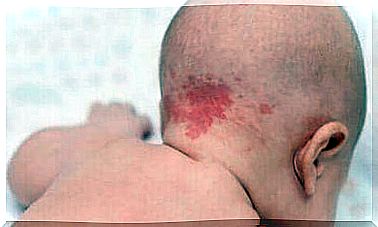What You Need To Know About The Types Of Glaucoma

Glaucoma is an eye disease that manifests itself in different ways. Although it is normally associated with hypertension of the eye, the truth is that there are types with normal eye pressure. That said, all types of glaucoma are chronic and degenerative.
This means that if left untreated they will evolve and lead to optic nerve damage. The worst result of the process is blindness due to the destruction of the system that captures images and sends the information to the brain.
Diagnosis of Glaucoma
One of the problems with diagnosing glaucoma early is that it has no obvious signs in the beginning. A person can spend years developing ocular hypertension without even knowing it.
To confirm this condition, you need to measure intraocular pressure. This is a procedure that the ophthalmologist performs with the appropriate equipment. Although they do a measurement when there are symptoms, they can also routinely do this in certain at-risk patients who do not yet have the disease.
Risk Factors for All Types of Glaucoma

There are people who are at higher risk of developing any type of glaucoma. In these patients, it is important to watch for early signs and to measure intraocular pressure during adulthood.
A fundamental problem is that the risk increases with age (Spanish link). Adults over the age of 40 gradually increase their chances of developing the disease as they get older.
Family history is also an indicator. If a parent has had glaucoma of any kind, then it is likely that one of their children will also get it. However, they don’t get it in childhood, but later as an adult.
Its association with other eye diseases is also important. Myopia is a risk factor for glaucoma. Researchers estimate that myopic patients are twice as likely to increase their intraocular pressure than the rest of the population.
The most common types of glaucoma
As reported by the National Eye Institute, there are 4 common types of glaucoma. They are classified by how the drainage of fluid from the eyeball is impeded and by when they appear.
open-angle glaucoma
This is the most common type of glaucoma in the world. What happens is that it blocks the small outlets that the eye uses to remove the internal fluid. Due to a build-up of fluid that cannot escape, the intraocular pressure increases.
The progression is very slow, chronic and degenerative. Patients often discover it too late, after some of the damage has already occurred. It is therefore often referred to as silent blindness. Treatment varies from medication to surgery. There are also several surgery options that your eye doctor will choose.
Closed-angle glaucoma
The type of angle-closure glaucoma is much less common than the open-angle type. It also tends to develop symptoms more acutely and clearly than the previous type.
The name closed angle responds to the measurement that eye doctors make of the angle formed by the iris and the cornea. In this case, this value is lower than what is considered normal and it is precisely this altered anatomy that blocks the natural drainage of fluid from the eye.
Medical care for this condition should be prompt. It takes less time to act than open-angle glaucoma and the consequences can be more serious if you don’t respond quickly.
Normal Tension Glaucoma

This type of glaucoma is the rarest. When the ophthalmologist measures the patient’s intraocular pressure, it is at normal or even low values. However, the optic nerve damage and degeneration are already there, as with the other types. Scientists are unsure of the cause of this type of glaucoma and treatment is difficult.
Congenital glaucoma
The congenital variant of the disease occurs because the baby is born with an abnormality in the angle of the iris and cornea, which prevents the normal development of the intraocular fluid drainage channels.
Thus, from the beginning of life, the eye increases its internal pressure. Today’s solution is early surgery on the young child. That way you can avoid serious future complications.
All types of glaucoma are serious
Although diverse, each type of glaucoma is serious. If you have symptoms of vision loss, don’t delay seeing an eye doctor.
The professional will measure your intraocular pressure and perform more procedures to evaluate the vitality of the retina and optic nerve. If they detect a change, they can suggest the use of medication and, if necessary, corrective surgery.









